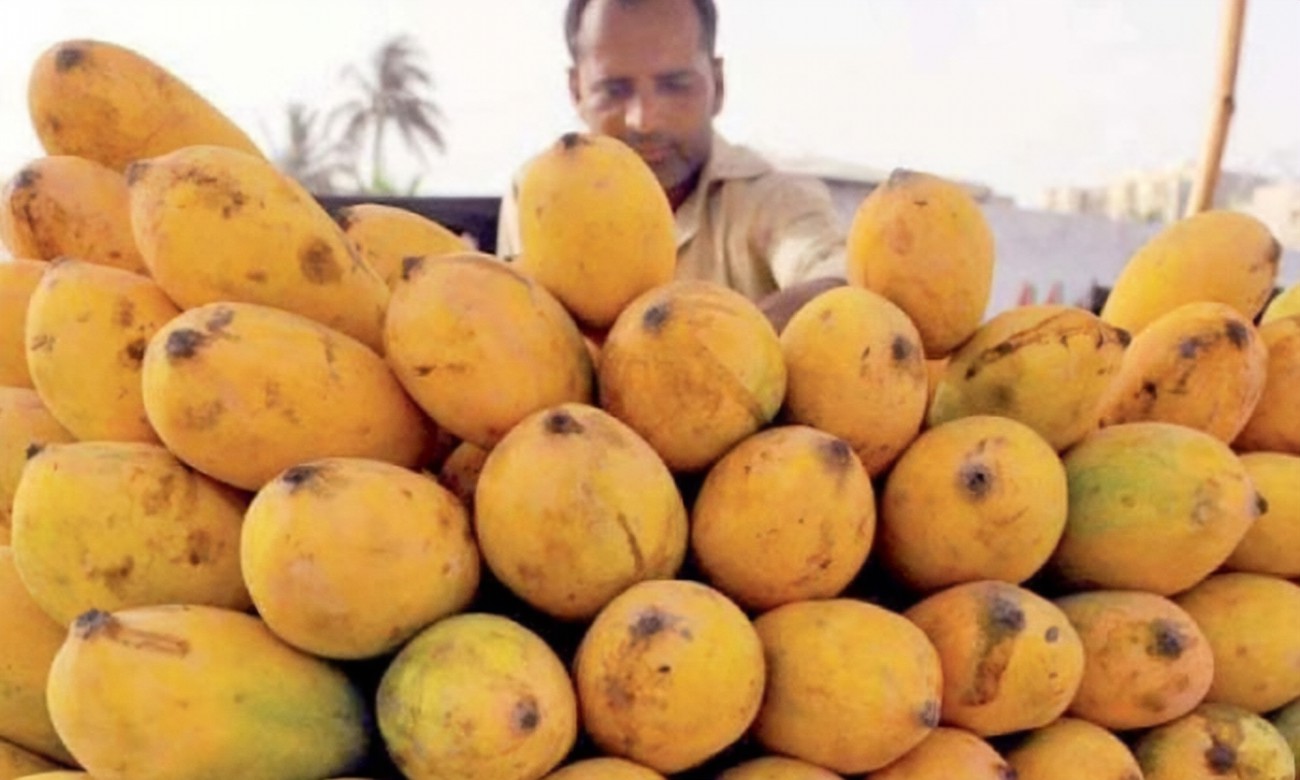People were urged not to go outside at this time of year, but mango harvesters were left wondering what to do with their crop in order to protect it from the growing temperature.
The recent heatwaves has directly impacted mangoes, one of Pakistan’s most important fruit crops in the region.
Climate change-induced heat waves are expected to rise more often, and mango production is in jeopardy as a result. According to some estimates, between 50 and 60 percent of this year’s mango harvest has been affected.
This year’s heat wave has impacted various crops, including mango and watermelon, says Punjab Department of Agriculture Director-General Dr Anjum Ali Buttar (Extension).
Mangoes discharge water stored in their leaves, fruits, and stems to cool down when it’s hot, according to Dr Buttar, who wrote about the heatwave’s impact on mangoes: “ripe fruit is the most affected by this natural process of plants striving to save their life.”
According to the department’s predictions, the mango crop has suffered a 35-40% decrease in usual yearly output.
Mango exporter Zahid Hussain Gardezi has been devastated by the poor quality of this year’s supply. Climate change has had a significant influence on their source of income.
Gardezi’s biggest concern is that exports would be harmed since the famous Sindhri mango has become misshapen and smaller as mercury levels have risen. In addition, he believes that the USDA’s estimates of produce losses are significantly understated. The output of Langra, Anwar Ratool, Late Ratool, and Chenab Gold is reduced by a third. “Sufaid Chaunsa’s, Summer Bahisht Chaunsa, Malda, and Azeem Chaunsa’s production all plummeted by 50%,” the exporter bemoaned.
Besides Gardezi, local farmer Amir Hayat Bhandara noted that farmers in Multan and Rahim Yar Khan were most hit by the poor harvest of the king of fruits, losing 40 to 50 percent of their typical yield. Dr Buttar believes that not all farmers were in the same predicament as those in South Punjab.
In the aftermath of the heat wave, mango growers will be happy. Plants require extra water in hot temperatures, which some farmers realised early on and prepared for.
However, Bhandara said, “As always, the administration does not realise the multitude of challenges we were confronted with. If water was not in low supply, we could have irrigated our crops as well. In addition, insect infestations occurred sooner than normal.”
In light of this, mango exporter Gardezi was questioned about how he would deal with the summers to come, to which the farmer shrugged and stated, “maybe agricultural research scientists can design a strategy for us and the government can offer help in some manner.”
Mangoes in Punjab are in short supply because of the current heat wave. The unusually warm weather has seriously harmed this year’s mango crop. The unexpected shift in climate has impacted about 50-60 percent of the mango crop. In comparison, the heat wave has had little effect on the Dusheri, Fajri, and Kala Chaunsa mango kinds; Sindhri has produced malformed and small-sized fruits, while the SB Chaunsa and Sufaid Chaunsa mango varieties have been more severely damaged.
Because of their malformation and large size, Sindhri’s exportable fruit is down by around 20% this year. Temperatures rose by over 5 degrees Celsius between March 10 and March 22 this year, compared to the same period in prior years, causing a rapid decline in mango flowering. Later fruit drop at the Marble size stage of fruit development occurred in April, even though pollinators were less noticeable.
The Southern Punjab Mango area is still under the influence of heat waves. There is a lack of canal water, load shedding, diesel fuel shortages for irrigation, and rain as a natural remedy all contributed to this calamity.
An exporter from the mango industry claims that the fruit is in high demand in the United States. Even while mango crops have been damaged by climate change in the last several years, to some extent, the impact this year was severe. Varieties are in a steady state of production. The least affected areas are Dusehri, Fajri, and Kala Chaunsa. Sindhri produces smaller, misformed fruits that limit the variety of exportable produce available.
Works at The Truth International Magazine. My area of interest includes international relations, peace & conflict studies, qualitative & quantitative research in social sciences, and world politics. Reach@ [email protected]










